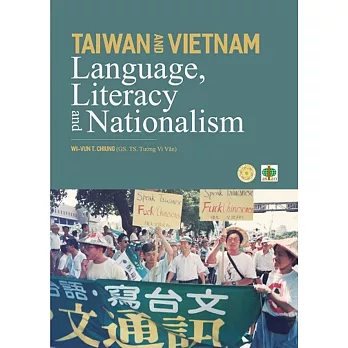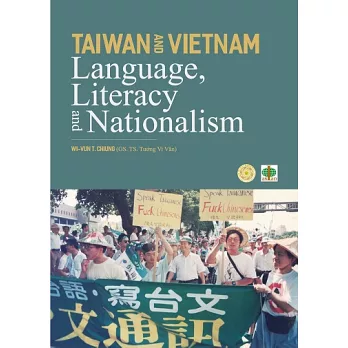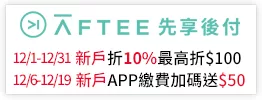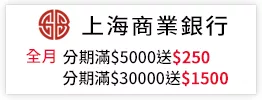推薦序
This book of professor Wi-vun CHIUNG could be regarded as a chronicle of Taiwan, the island state that has special relations with Mainland China and has suffered vicissitudes in history, as it used to happen in Korea, Japan and Vietnam.
This book provides many scientific information on Taiwanese language, literature and culture, especially the revitalization and Romanization of Taiwanese language, which is linguistically different from Mandarin Chinese.
The author has portrayed a colorful picture of the island Taiwan. He compared Taiwan with Japan, Korea and Vietnam with regard to the preservation and development of language, literature and culture.
The author has pointed out that the KMT regime considered Taiwan as a Chinese territory divided by geography, so KMT adopted wrong and cruel policy on Taiwan’s languages, literature and culture to prevent Taiwanese people from being identify themselves as Taiwanese.
The author also surveyed the efforts of Taiwanese people to preserve and develop their language and literature in order to retain their national identity. For example, the efforts on Romanization movement, which is still on the half way to success. Or the successful reforms on politics and education in recent decades, which have promoted Taiwan to a modern society with its unique features in the globalization era.
The cultural and economic exchanges between Taiwan and Vietnam have significantly increased in recent decades, this book thus provides valuable references for Taiwanese and Vietnamese people to understand each other better and further to share their experiences in maintaining their own cultural characteristics.
This book also provides valuable knowledge about Taiwanese and Vietnamese from the perspectives of linguistics and orthographies. They are helpful for learning Vietnamese and Taiwanese languages.
Professor Wi-vun CHIUNG is not only a prestigious scholar, but also an enthusiastic patriot. In addition to academic research, he promotes Taiwanese language and literature in order to remain national identity of Taiwan. He also promotes academic exchange between Vietnamese and Taiwanese scholars through many practical events such as international conferences or workshops held by Center for Vietnamese Studies at National Cheng Kung University.
In short, I appreciate and admire what Professor Wi-vun CHIUNG has done so far. I sincerely introduce this book to readers, especially those in Vietnam.
Dr. NGUYỄN Văn Hiệp
Director, Institute of Linguistics
Vietnamese Academy of Social Sciences, VIETNAM
作者序
Why Taiwan and Vietnam? Most works of my research are related to comparative studies of Taiwan and Vietnam. Someone may be curious to know why I chose Vietnam to compare with Taiwan?
I was a promoter of Taiwanese languages before I went to graduate school in the USA. I was trying to save the Taiwanese languages which were suppressed by the Chinese monolingual policy of the Chinese KMT regime in Taiwan. I did not know much about Vietnam at that time. My limited impressions about Vietnam were a war and the orthographic transformation from Han characters to Roman scripts. I did not have the chance to get to know the Vietnamese people until I started my graduate studies.
Taiwan and Vietnam share a similar historical experience: that is, both used to be invaded and colonized by the Chinese Empire. As a consequence, Han characters were adopted in Taiwan and Vietnam. Although ancient China had occupied Vietnam for a thousand years and consequently had great influence on the Vietnamese culture, Vietnam has created its own culture with distinct characteristics. How could Vietnam successfully retain their language and national identity? How could Vietnam have so amazingly replaced Han characters with Vietnamese Romanization? In contrast, Roman scripts such as Sinkang Manuscripts or Pe̍h-ōe-jī were the first writing systems that appeared in Taiwan. However, Han characters, which came after Roman scripts, have become the dominant orthography in current Taiwanese society. What are the factors driving different outcomes in Taiwan and Vietnam? Will Taiwan have the potential to revive Taiwanese languages or to replace Han characters with Roman scripts? Those questions stayed in my mind while I was doing my research.
All the papers collected in this book try to answer these questions from different perspectives. The papers were originally presented in conferences, journals or book chapters. They were appropriately revised and updated to make a more consistent and systematic book. I expect this book to provide readers a better understanding of language, literacy and nationalism in Taiwan and Vietnam.



 天天爆殺
天天爆殺  今日66折
今日66折 


























 博客來
博客來 博客來
博客來 博客來
博客來 博客來
博客來 博客來
博客來